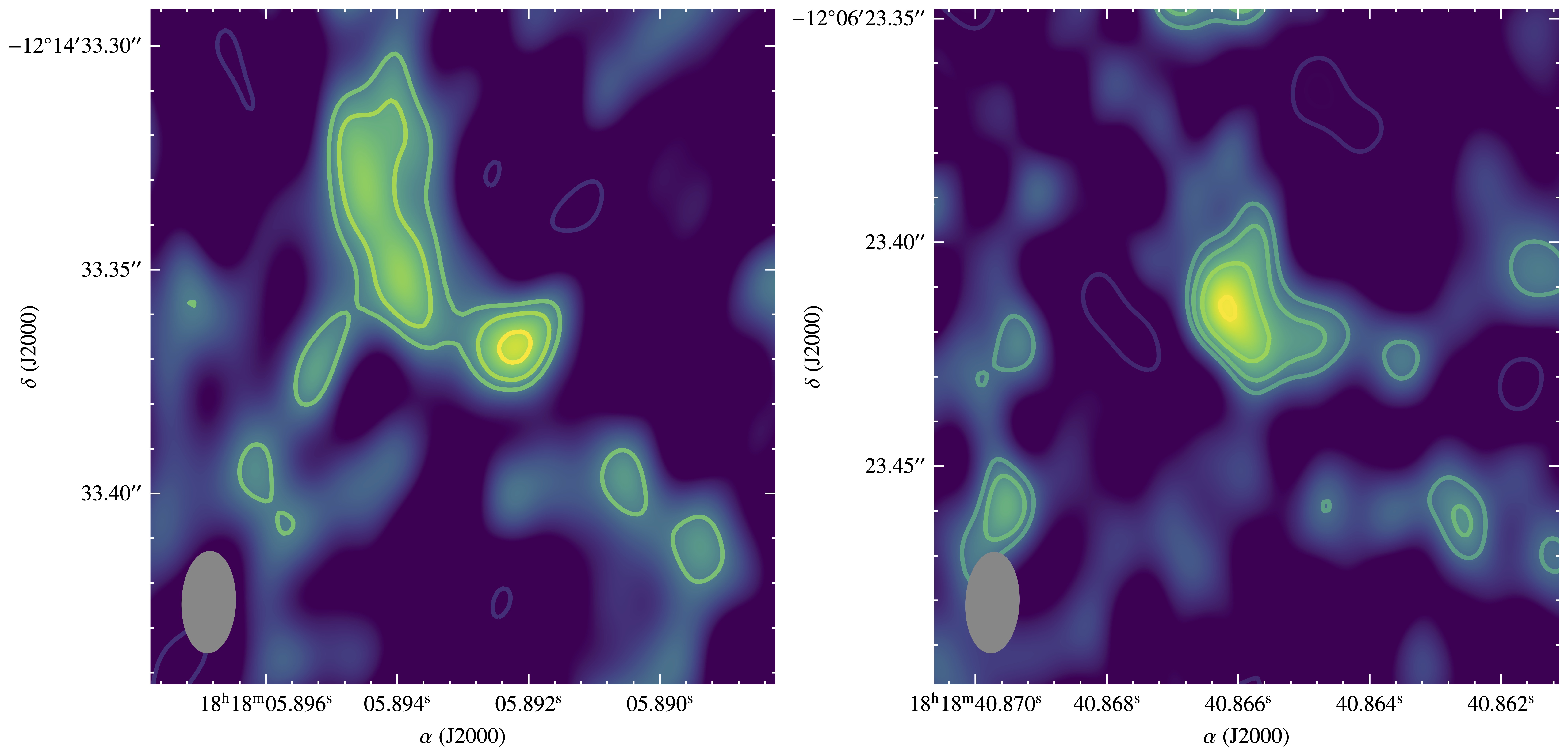
High-resolution radio imaging of the two particle-accelerating colliding-wind binaries HD 167971 and HD 168112
Michaël De Becker
Massive stars (typically O-type stars and their Wolf-Rayet evolved counterparts) produce powerful winds carrying a lot of kinetic power. In binary systems made of massive stars, the winds collide. These colliding-wind binaries (CWBs) allow us to investigate various aspects of shock physics. Among them, some systems show compelling evidence for the existence of a population of relativistic particles. This subset of CWBs is referred to as Particle-Accelerating Colliding-Wind Binaries (PACWBs). In such systems, populations of relativistic particles are accelerated through the diffusive shock acceleration mechanism. The occurrence of this process is revealed by the production of non-thermal radiation, including in particular synchrotron radio emission. To date, 50 systems are part of the catalogue of PACWBs (De Becker & Raucq 2013). The investigation of the fraction of particle accelerators among CWBs constitutes a key question in this field, in connection with the question of the contribution of PACWBs in the production of galactic cosmic rays (De Becker et al. 2017).
A difficulty inherent to the study of PACWBs comes from their composite radio emission: on top of being potential synchrotron radio emitters in binary systems, individual stellar winds are also thermal free-free radio emitters. If one wants to spatially disentangle the thermal and non-thermal contributions, high resolution radio imaging is required, hence the importance of VLBI observations of these systems. A requirement for VLBI measurements is to consider orbital periods of at least a few years, for systems at a distance of a few kpc. This translates into angular separations of at least a few milli-arcseconds, in compliance with the imaging potential of the European VLBI Network.

HD167971 and HD168112 are two PACWBs made of O-type stars. HD167971 is a triple system with a third component on a 20-year orbit. The synchrotron emission is arising from the wind collision in this long orbit. The EVN image at 1.67 GHz (Fig. 1, left) shows the synchrotron emission region at apastron, when the intrinsic synchrotron emission is at minimum. HD168112 is a very likely binary system, but direct evidence is still missing. Previous low angular resolution radio measurements revealed the presence of synchrotron emission, but this system never benefited of dedicated VLBI observations until recently. The EVN image (Fig. 1, right) presents the very first radio imaging of the synchrotron radio emission from this system. The source also displays a slightly elongated shape in agreement with expectations for the morphology of a synchrotron emission region in a PACWB, coincident with the colliding wind region in a binary system.
Flux densities for both systems a largely in excess of the expected thermal emission from the stellar winds, lending support to the idea that the EVN sources are of synchrotron origin despite the lack of spectral index determination. The results provide compelling evidence that snapshot VLBI measurements of massive stars systems have the potential to reveal at one single epoch the non-thermal emitter status of massive star system. This constitutes thus an efficient tool to identify PACWBs to be included in the catalogue, and get more insight into their population. Last but not least, one should also emphasize the importance of these results in the framework of the synchrotron-binarity correlation: a synchrotron-emitting massive star must be a binary, or a higher multiplicity system. The identification of synchrotron emitters is thus also telling us about the multiplicity of massive stars, especially in the long period parameter space that is still much less explored than that of short period binaries.
Reference:
De Becker, M., Marcote, B., Furst, T. & Benaglia, P. 2024, A&A, 682, A160
https://doi.org/10.1051/0004-6361/202348622
Contacts:
Michaël De Becker
STAR Institute, University of Liège, Belgium
Benito Marcote
Joint Institute for VLBI ERIC, The Netherlands